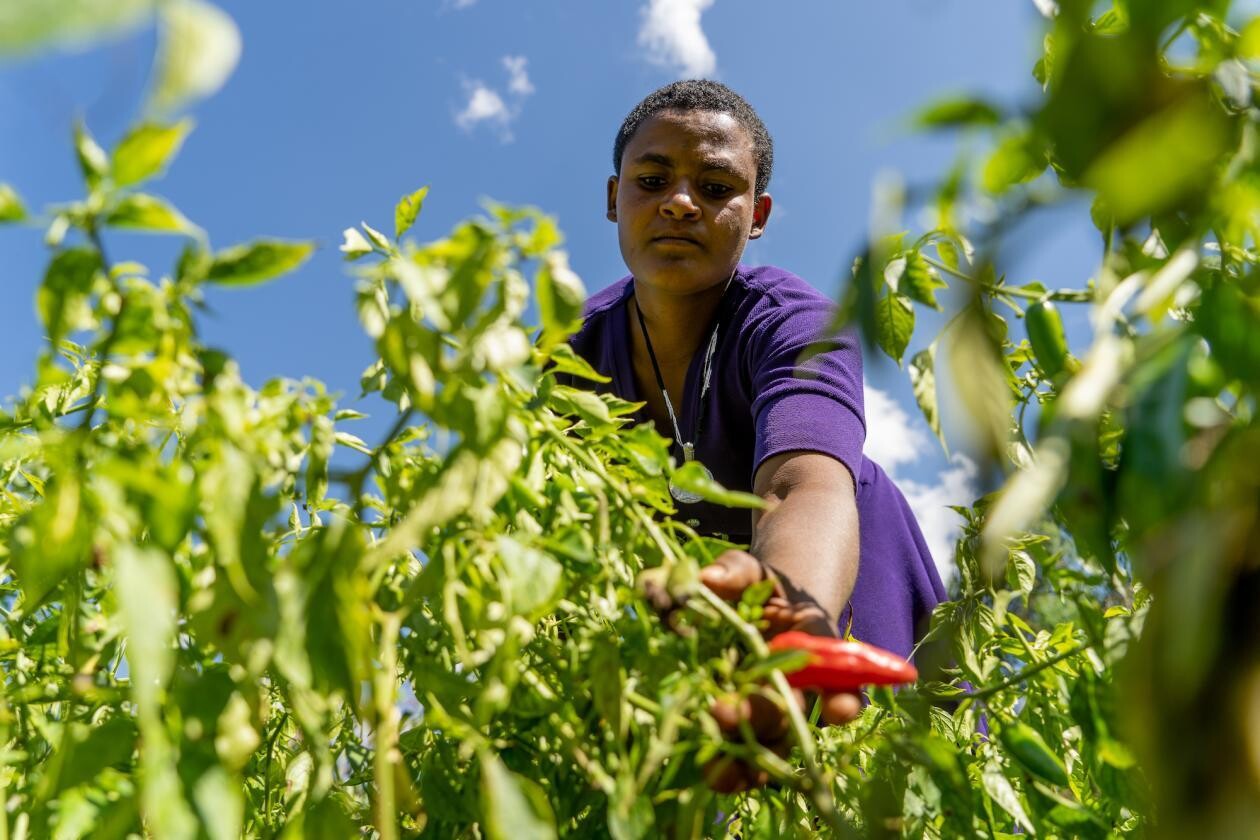Lake Tana is immense. From a shoreline too distant to see, waves move across the lake, bringing warm, humid air to the city of Bahir Dar in northwest Ethiopia. Further inland, farming communities irrigate their crops — wheat, corn, potatoes, onions — drawing from a reservoir fast-filling with silt. Up in the highlands, the earth is scarred with deep cracks, and household wells run dry.
Even here in the headwaters of the Blue Nile, a place historically known for its water abundance, there is increasing water scarcity. Throughout this landscape, the Tana watershed, farming families wonder when the rains will come this year. They are experiencing the impacts of a changing climate firsthand: a water cycle out of sync with centuries of farming tradition.
W/ro Yezina Alemneh* cares for her young son and the family cattle in a part of the Tana where wells and springs are drying up. She joins other women and children to walk far distances and wait in long lines to collect water, sometimes costing hours of her day.
“Now I have finished my studies, so I can wait in line to get water,” she said. “But the students … they can’t reach school on time.”
As is the case elsewhere, the causes of water insecurity in the Tana watershed are complex, driven in part by local conditions like a growing population, an expanding economy, inadequate water governance and insufficient investment in infrastructure like wells and sewage systems. But there are also bigger sources far outside the control of Tana’s farming communities.
Their story lays bare one of the fundamental inequities in water management: While water problems are felt most acutely at the local level, their drivers are increasingly global.



No Comment Found.